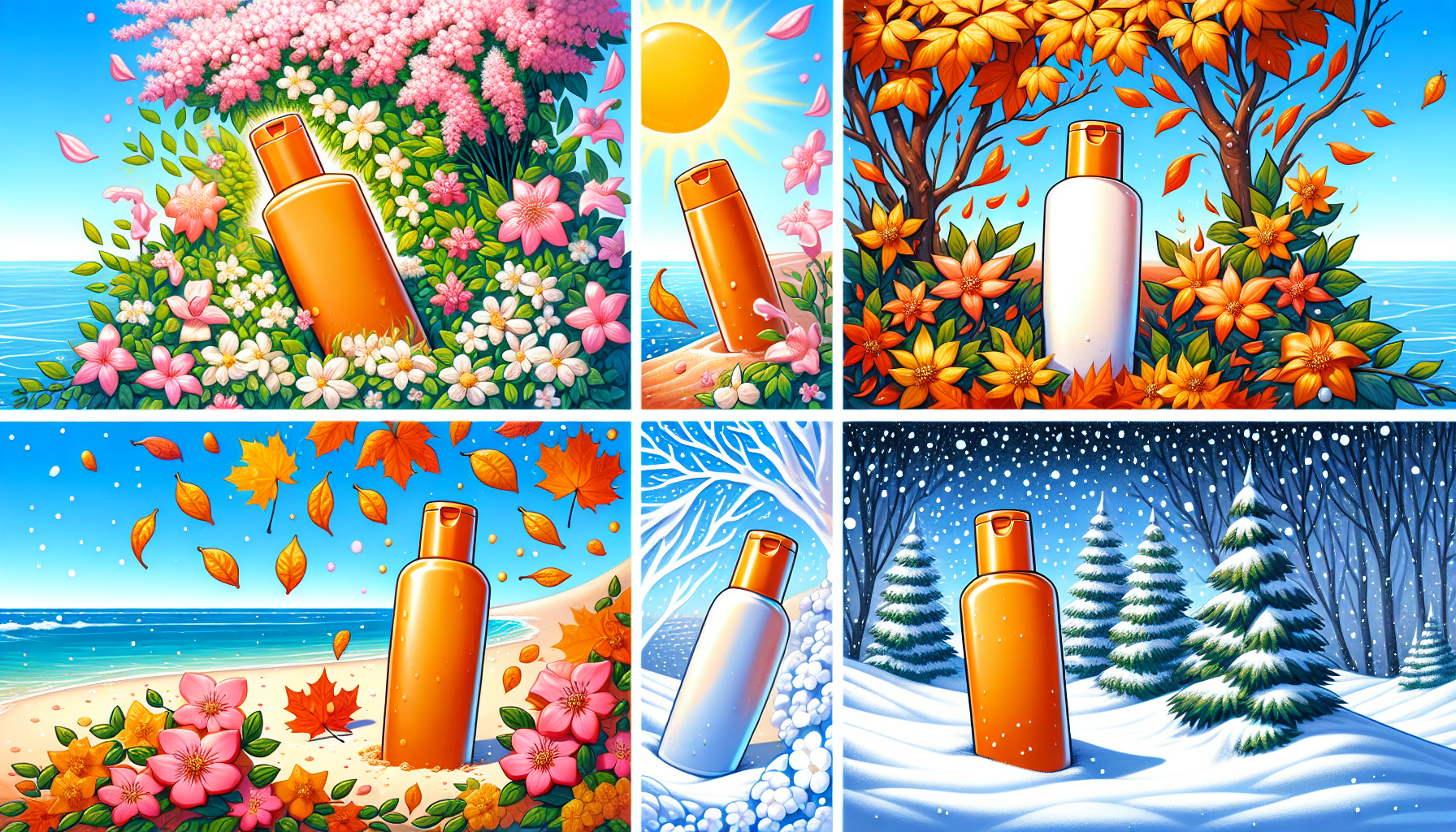When it comes to skin health, protecting it against the sun’s harmful ultraviolet (UV) rays is a fundamental aspect that cannot be overstated. Ultraviolet radiation from the sun can lead to not only immediate concerns like sunburn but also long-term damage such as premature aging and an increased risk of skin cancer. As the seasons change, so does the intensity and angle at which the sun’s rays hit the Earth, altering the type of sun protection you might need. This comprehensive guide delves into how to select the best sunscreens for different seasons, ensuring that your skin remains safeguarded all year round.
Understanding UV Radiation and Skin Health
Before delving into seasonal sunscreen selection, it’s crucial to grasp the impact of UV radiation on skin health. The sun emits two types of harmful rays that reach the Earth’s surface – UVA and UVB. UVA rays are primarily responsible for skin aging and long-term damage, while UVB rays cause sunburn and are strongly linked to skin cancer. A broad-spectrum sunscreen can protect against both types of rays, a vital feature to look for regardless of the season.
Sun Protection in Spring and Fall
During the spring and fall, the sun’s rays are less intense than in the summer, but that doesn’t mean you can skimp on sun protection. In these transitional seasons, UV rays can still penetrate through clouds and reflect off surfaces, increasing your exposure. Opt for a broad-spectrum sunscreen with an SPF of at least 30. Additionally, this is a good time to incorporate products that enhance skin absorption, such as those discussed in Strategies to Enhance Skin Absorption of Products, to ensure that the sunscreen’s active ingredients are fully effective.
Summer: The Peak of Sun Intensity
Summer demands the most vigilant sun protection efforts. With longer days and more direct sunlight, choosing a sunscreen with a higher SPF, such as SPF 50 or above, is advisable. Water-resistant formulas are also preferable, especially if you’re spending a lot of time swimming or sweating. Remember to reapply every two hours, or more frequently after getting wet or drying off with a towel. For those who spend a significant amount of time outdoors, consider reading about Innovative Approaches to Skin Hydration to keep your skin moisturized and healthy under the sun.
Winter Sunscreen: Don’t Be Fooled by the Cold
It’s a common misconception that sunscreen is unnecessary during the winter months. While UVB rays are weaker, UVA rays remain relatively constant year-round and can penetrate through windows and clouds. For winter sports enthusiasts, snow reflection can significantly increase UV exposure. A moisturizing sunscreen with at least SPF 30 is recommended, and for those hitting the slopes, a water-resistant formula will help protect against the dual threat of sun and snow glare. Understanding the need for protection in all climates is further explored in Understanding the Need for Sun Protection Factor in Lip Care, which emphasizes the importance of SPF in products beyond traditional sunscreens.
Choosing the Right Sunscreen
Regardless of the season, selecting the right sunscreen involves more than just SPF. Here are some factors to consider:
- Broad-Spectrum Protection: Ensures defense against both UVA and UVB rays.
- Water Resistance: Crucial for activities involving water or sweat.
- Skin Type: Oily, dry, or sensitive skin requires specific formulations for comfort and effectiveness.
- Ingredients: Mineral sunscreens with zinc oxide or titanium dioxide are preferred for those with sensitive skin, while chemical sunscreens may be more suitable for water resistance.
For in-depth information on selecting products tailored to your skin type, peruse Tailoring Skin Care to Genetic Skin Types.
External Resources for Informed Selection
When researching sunscreens, it’s beneficial to consult highly specific resources to support your choices. Some notable ones include:
- The Environmental Working Group (EWG) Guide to Sunscreens: Offers in-depth analyses of sunscreen ingredients and their health impacts, helping you choose safer and more effective products.
- The American Academy of Dermatology (AAD) Sunscreen Resource Center: Provides expert advice on sunscreen selection and application.
- The Skin Cancer Foundation’s Sunscreen Information: Shares insights on sunscreen efficacy and tips for broad-spectrum protection.
Application Tips for Maximum Protection
Proper application is as crucial as the sunscreen you choose. Here are some tips to get the most out of your sunscreen:
- Apply liberally and evenly to all exposed skin, including often-missed areas like the ears, feet, and back of the neck.
- Use a shot glass amount for the body and a nickel-sized dollop for the face.
- Reapply every two hours, or after swimming, sweating, or towel drying.
- Don’t forget lip balm with SPF and protective clothing, hats, and sunglasses.
In conclusion, while the choice of sunscreen may vary with the seasons, the need for protection does not. By understanding UV radiation and its effects on skin health, selecting the appropriate sunscreen, and applying it correctly, you can significantly reduce the risk of skin damage throughout the year. Remember to consult niche resources and stay informed on the latest sunscreen advancements to keep your skin healthy and radiant in every season.



